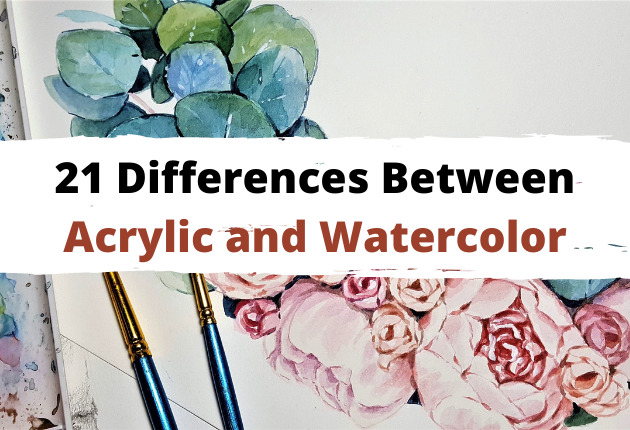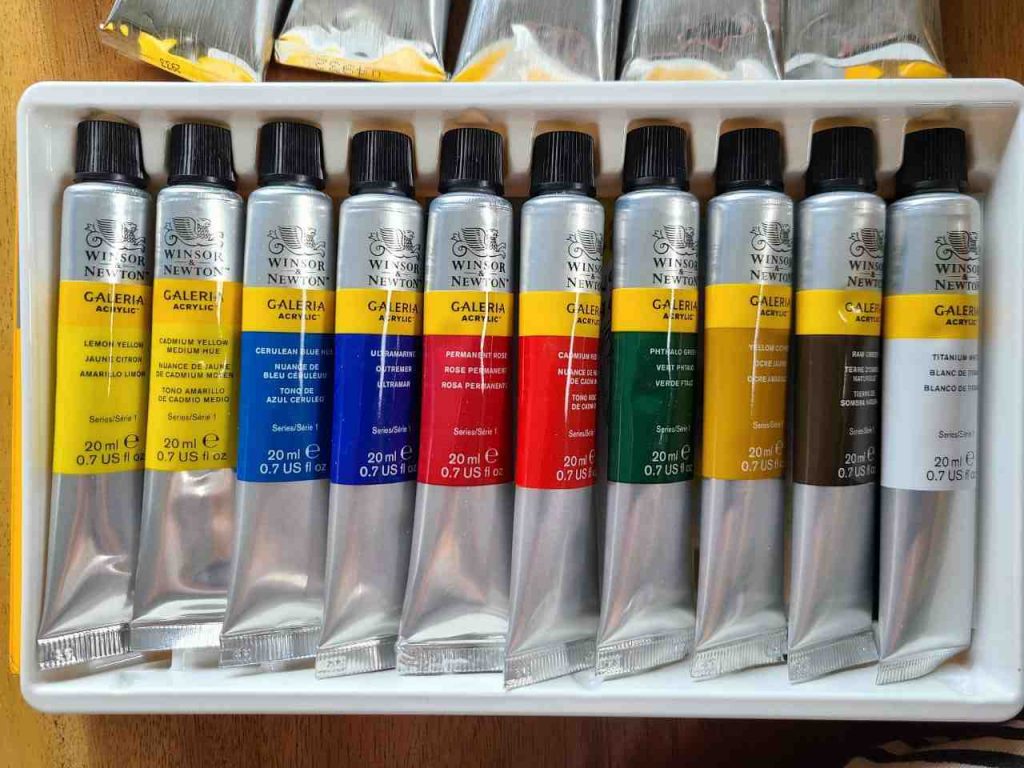Last Updated on March 22, 2024 by Masha Eretnova
You come to an art supplies store and you are captivated by the variety of colors, tubes, and tools.
Where to start which should you choose deciding watercolor vs acrylic? What is the difference between acrylic and watercolor and which should you choose?
Both acrylic and watercolor paint are water-based and beginner-friendly. But acrylic paint is better and easier for beginners than watercolor.
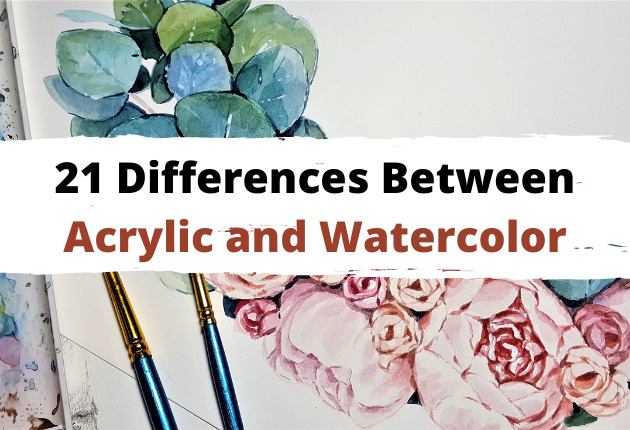
Acrylic and watercolor differ in their paint compositions, use, and techniques, choice of brushes, but I’m sure, you really want to know which paint is the best to start with and how much they cost, let’s start from the most important and then dig into more differences and some similarities too!
So let’s talk about it.
Table of Contents
This article contains affiliate links. It means no extra cost for you but a little commission (2-3%) for me to support my hobby and blog. Thank you!
How Similar are acrylic and watercolor?
Both watercolor and acrylic paints are water-based paints that are beginner-friendly.
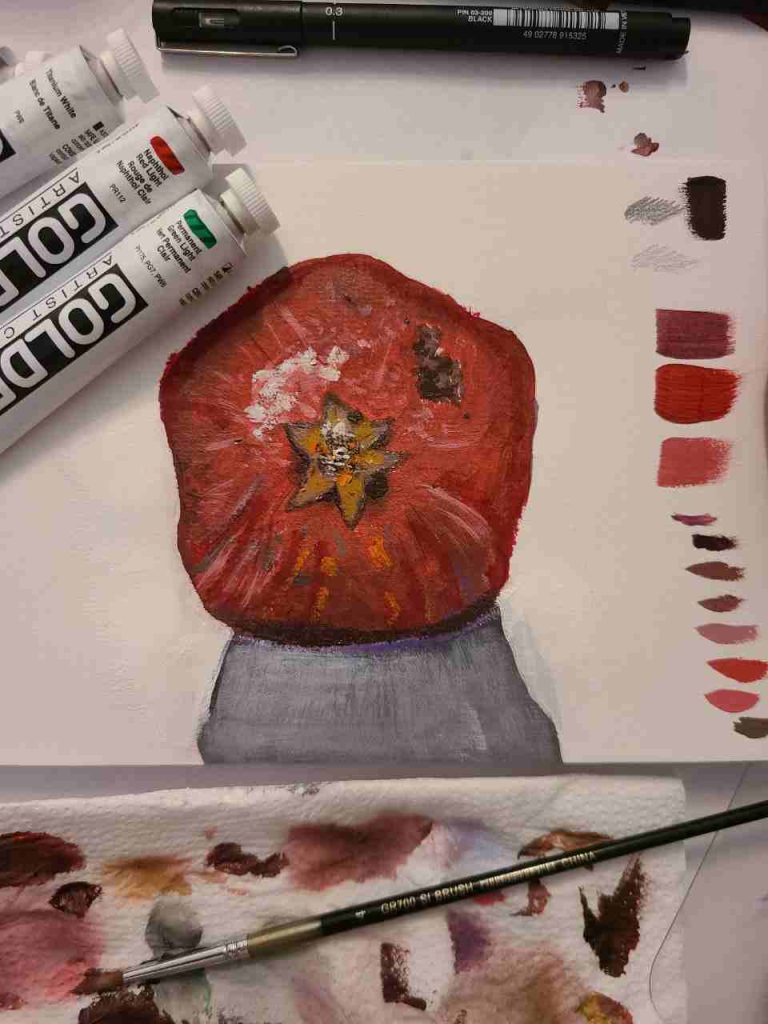
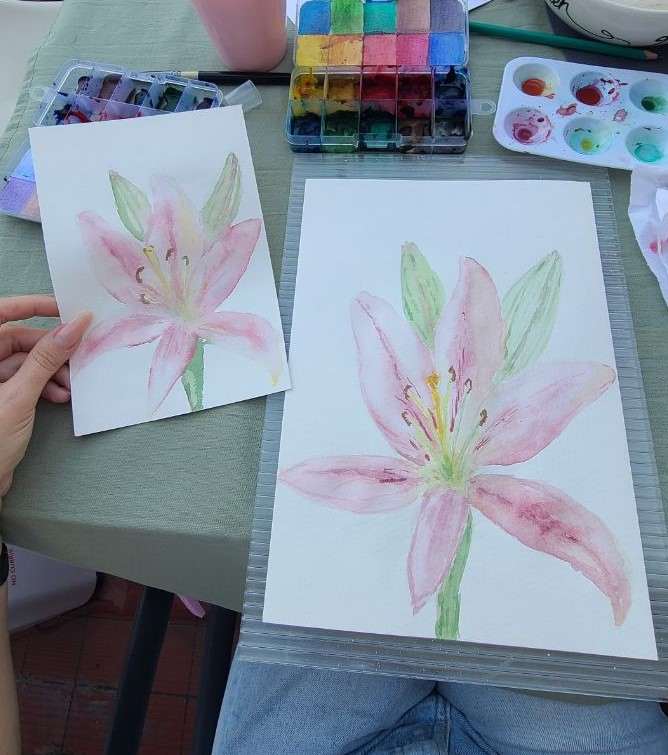
They use grades to define paint quality – between student-grade and artist-quality paint, the artist’s grade contains more pigment and is supposed to be better quality. More expensive also.
- Watercolor is as fast-drying as acrylic paint.
- With both paints, you can make the paint more opaque by adding white –
Titanium white for acrylics and Chinese white for watercolors. - Both watercolor and acrylics have different brands and some of them are relatively cheap mediums to start with
- Both acrylic and watercolor paintings will need good protection: framing and UV protective finish because both watercolor and acrylics are sensitive to sun and fading.
I also would like to say that in mixed media painting, both acrylic and watercolor can be used together!
Watercolor VS Acrylic: Differences in Paints and Use
| Properties | Watercolor | Acrylic Paint |
|---|---|---|
| Composition | water, pigment, gum Arabic or glycol | water, pigment, polymer binder |
| Pigment quality | fine pigments, both natural and synthetic | from regular to rare premium pigments with high vibrancy |
| Drying time | 5-10 min | 5-30 min (60 min open acrylics) |
| Can be reactivated (color lifting) | Yes, easily with water | No, hard once dry |
| Water-resistant once dry | No | Yes |
| Main application surface | Watercolor paper | Practically any porous surface |
| Application | Watery, creates washes | Smooth, thin or thick, excellent coverage |
| Coverage | transparent | excellent |
| Finish | Matte | Semi-gloss |
| Transparency/Opacity | transparent colors | opaque with some semi-transparent colors |
| Lightfastness | Colors are not permanent | Good to excellent lightfastness, permanent colors |
| Color mixing | Great | Excellent |
| Layering | Challenging, need to be careful with the amount of water to not lift the previous layer. From light to dark. | Excellent. From dark to light. |
| Mediums | Fewer watercolor mediums exist. | Wide range of acrylic mediums to alter texture, consistency, drying time and other properties. |
| Textured application (impasto) | Not possible | Possible |
| Varnishing | Not mandatory | Highly advisable |
| Price | Good paints are expensive. | Wide range of prices. |
| Toxicity | Non-toxic, safe for kids | Non-toxic based on tests but does contain a lot of harmful components at low levels |
| Flammable | No, but paper is | Flammable when dry |
Different Paint compositions between acrylic and watercolor paint
Acrylic paint is water-based and is made of pigment, acrylic polymer binder, and some other agents. Acrylics are non-toxic, thick, and opaque.
Watercolor paint is made from a color pigment with gum Arabic mixed with honey or synthetic glycol that binds the pigment and allows it to adhere to a surface when dry.
Watercolor can also have some additives like glycerin, ox gall, honey, and preservatives.
Acrylics do not have any of them in their composition, but they can have some additives like plasticizers, silicon oils, defoamers, stabilizers, or metal soaps.
Modern paints generally use synthetic pigments.
Watercolor and Acrylics come in different types
Watercolor and acrylics have different types of paints based on their consistency or packaging.
Acrylic paints also differ by viscosity, while watercolor doesn’t have such a property.
| Watercolor types | Acrylic types |
|---|---|
| 1. Tube paint – The paint in the tube has a thicker consistency more like acrylics. | 1. Tube paint – Paint in the tube has a thicker consistency more like acrylics. |
| 2. Paint in the pan comes as a small dry cake in small plastic pans and requires more water to create the right consistency. | 2. Fluid acrylics have a lower viscosity but generally have the same pigmentation as the Heavy Body acrylics. These paints can imitate watercolor techniques and are good airbrush applications. |
| 3. Liquid watercolor is made with pigments and dyes. They are fluid and can be diluted with water for paler hues. It is good for airbrushes as well as traditional brush methods. | 1. Heavy body acrylics are typically thick and have high viscosity. Great for impasto and thicker applications. |
| 4. Acrylic gouache is water-resistant and dries matte. (Lascaux Gouache and Turner Acryl Gouache) | |
| 5. Craft acrylics are used in decorative painting techniques and faux finishes. Craft paints usually contain vinyl or PVA resins to increase adhesion and lower cost. | |
| 6. Interactive acrylics have the characteristic fast-drying nature of artists’ acrylics but are formulated to allow you to delay drying or re-wet the paint. (ex. Atelier Interactive) | |
| 7. Exterior acrylics are paints great for outdoor and exterior paintings. They are water and UV-resistant. Like craft acrylics, they adhere to many surfaces. |
Surfaces
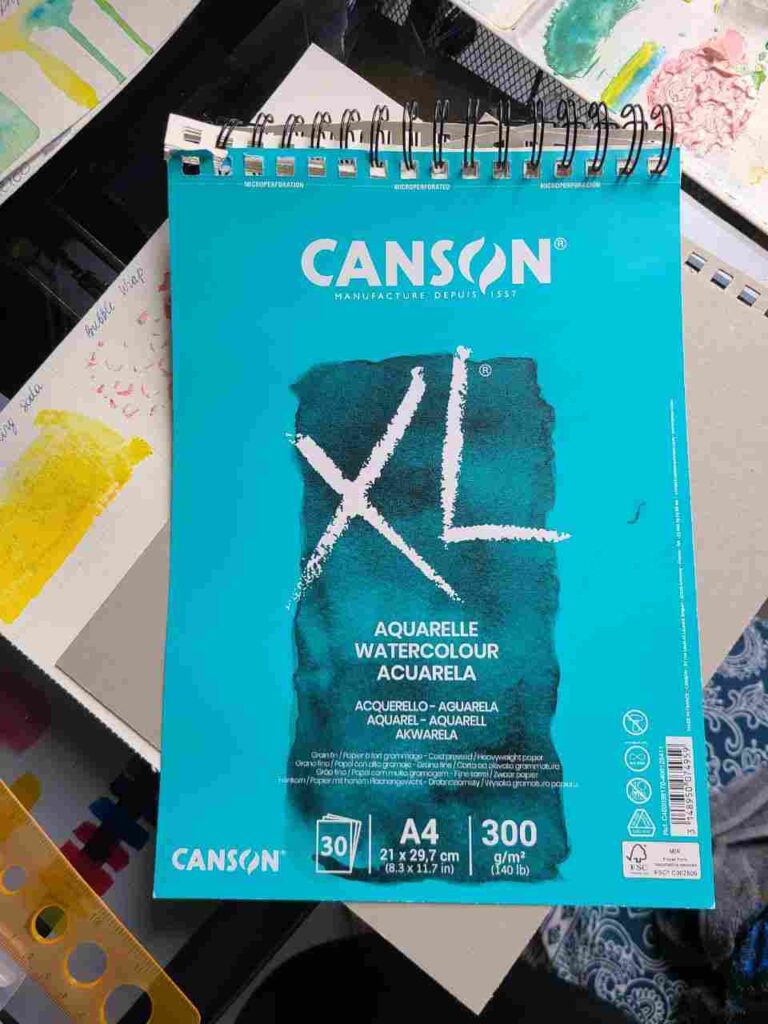
While acrylic paint is mostly used on canvases, watercolor paint is generally used on watercolor paper that has a weight of 140lb. (300gsm).
Be careful, you need only watercolor paper, not all kinds of paper.
You can apply acrylics on all absorbent surfaces such as wood, paper, canvas, and fabric, acrylics are also well known for their exterior use.
You can not use the same canvas for acrylic and for watercolor!
Other supports for watercolor include papyrus, bark papers, plastics, vellum, leather, fabric, wood, and watercolor canvas (coated with a gesso that is specially formulated for use with watercolors), but they are very rare to see. You can not use watercolor for exteriors.
Water
Acrylics are water-based and water-soluble but they don’t really like water.
Acrylic paints dry due to the water evaporation process while all pigment and binder elements stick together. The more water we add, the worse will be the stability of the paint.
Water dissolves acrylics and ruins their composition.
You are not recommended to add more than 30% water to thin the acrylic paint. When acrylics dry, they become water-resistant.
For the watercolor water is essential, it is due to dilution with water that you can create this famous watercolor effect.
When you do not add enough water to watercolor, the paint won’t flow or will create visible brush strokes. The color saturation and wash effect are very important for watercolor artists.
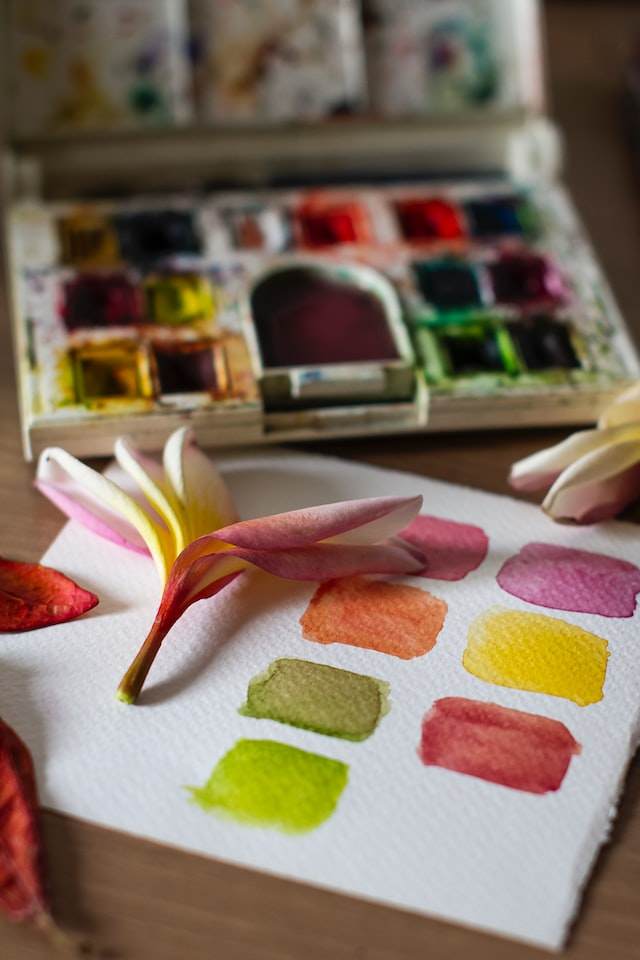
Transparent vs. opaque
Watercolor is translucent by its nature and acrylics are more opaque compared to watercolor.
In fact, opacity and transparency are more pigment characteristics than paint. Some pigments are more or less opaque than others.
The opacity allows acrylics to cover up mistakes and cover large areas, creating an even, deep, heavy finish.
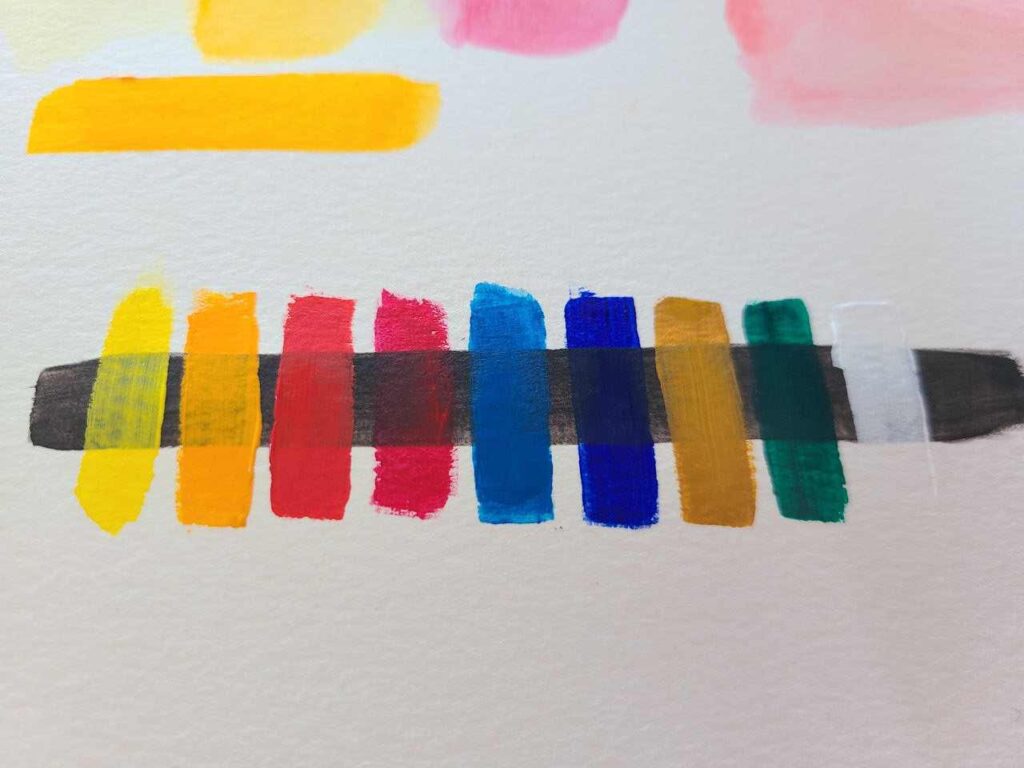
Keep reading: 7 Ways How to Make Acrylics More Opaque & Full Opaque Colors List
Different use of white
White color is important for acrylic painting: you use it for highlights, for creating diverse tints, and to make other colors more opaque.
Watercolor painting usually doesn’t use white color, as watercolors are lightened and thinned with water to create transparency and white color is opaque.
To have white in the painting, watercolor painters simply leave the paper area visible.
Watercolor is harder to learn
- Acrylic paint is the best option for beginners: it is easier to master and more forgiving your mistakes while you’re learning. It is also fast-drying and is very opaque.
You can apply acrylics directly from the tube, or slightly diluted with water.
Acrylics are a faster medium. Fast to create a shape, fast to dry, and fast to clean.
Good acrylic paint brands: Golden, Liquitex, Winsor & Newton, Amsterdam
- Watercolor takes more time to master and is great for more patient beginners.
To really master them you need a lot of time, some beginners spend about 6 months getting really comfortable with watercolor.
With watercolor is more difficult to cover a mistake, while with acrylics you can wait until it dries (10-20 min) and just cover it with another layer of paint and redo.
You are right, all techniques take time to be good at, and the final choice fully depends on your preferences. You can always try both paints and use them both!
Good watercolor paint brands: Holbein, Winsor & Newton, Daniel Smith
A quick example of acrylic vs watercolor painting (landscapes):
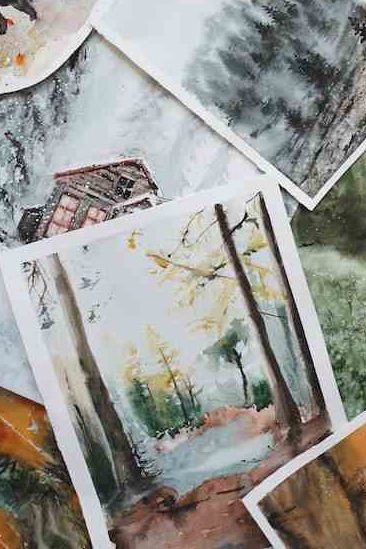
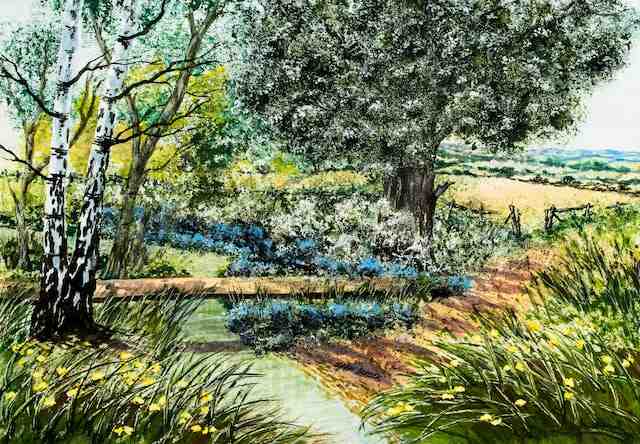
Watercolor sure does look easier, but the right amount of water will be the challenge while with acrylics it looks very difficult, but you can layer it easily and mix.
Other comparisons with acrylics:
- Poster Paint vs Acrylic Paint: What’s the Difference and Which is best?
- Tempera Vs Acrylic Paint: What Are The Differences?
- Gouache Vs Acrylic: What’s the Difference, and Which is Best for Beginners?
Different techniques and styles between watercolor and acrylic
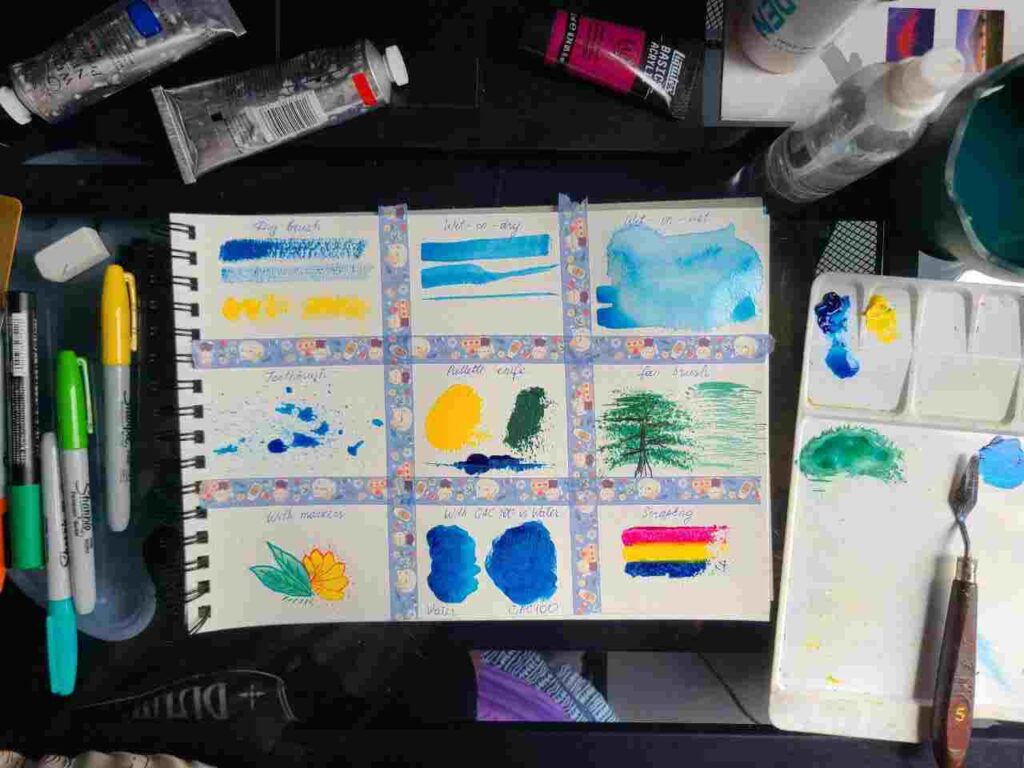
Some techniques are almost impossible with watercolors, such as impasto or pouring, and some others do not apply to acrylics as a wet-on-wet technique which is a common basic technique for watercolor.
The impasto technique creates an interesting texture, it is a thick and heavy paint application, usually with a palette knife and special paint or normal paint mixed with heavy gels.
Acrylic pouring is extremely popular nowadays because it is quite easy and allows you to create a huge variety of paintings and let your creative soul enjoy it.
For acrylic pouring, you basically need a canvas, paint, pouring medium (Floetrol or other), and cups.
Watercolor pouring also exists but it has a completely different appearance and effect, which you can not also copy with acrylics. Compare these two paintings:
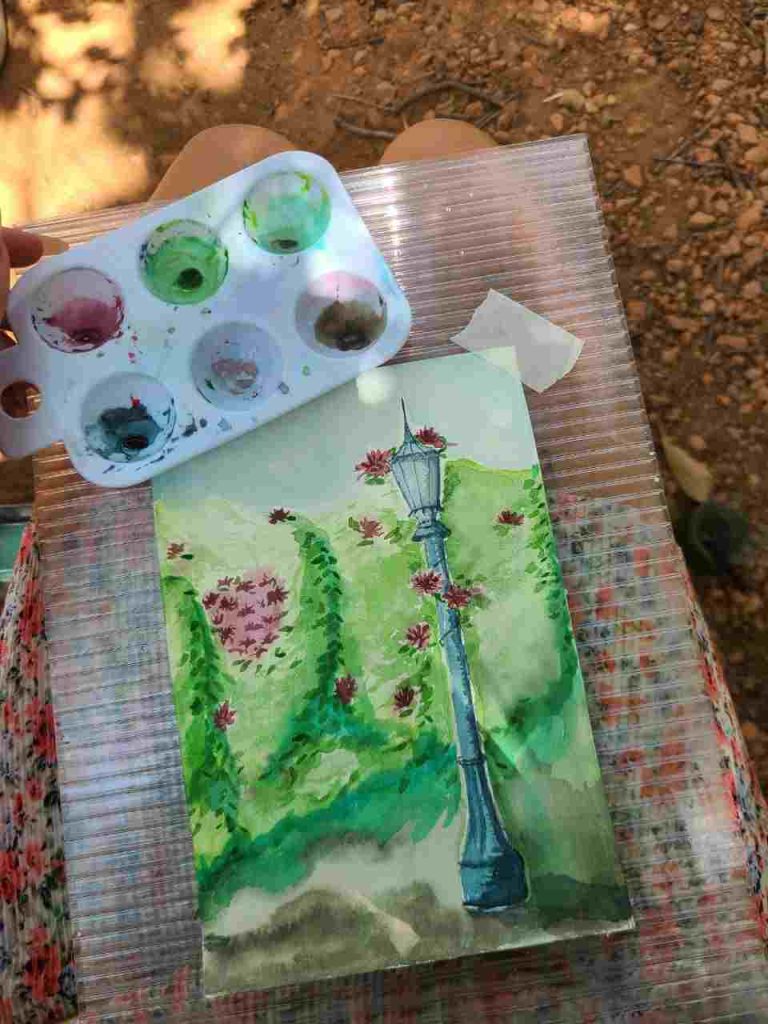
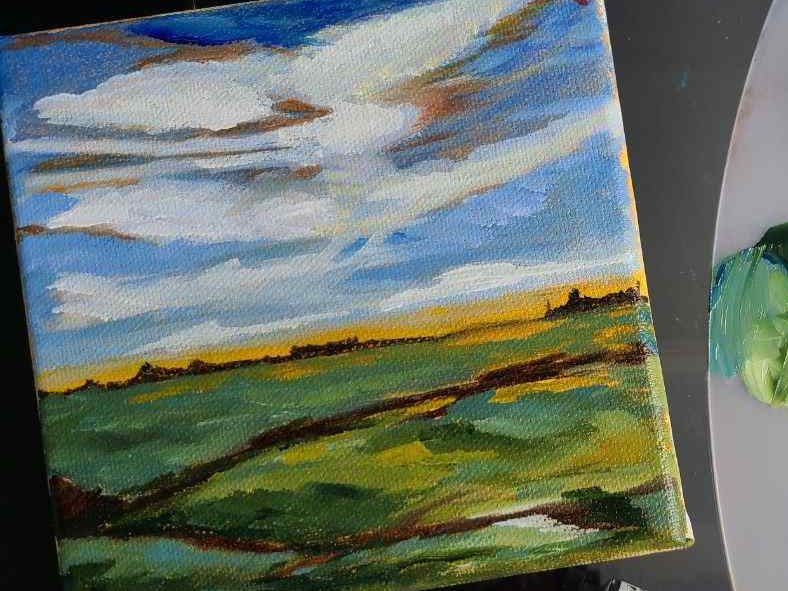
Wet on wet is when you paint with “wet” paint over the wet paper. This creates a fluid, fun, and unpredictable effect. Basically, with acrylics, you always work with the wet-on-dry technique, because the surface is dry.
More on acrylic painting techniques: 70+ Acrylic Painting Techniques For Beginners to Paint like a Pro
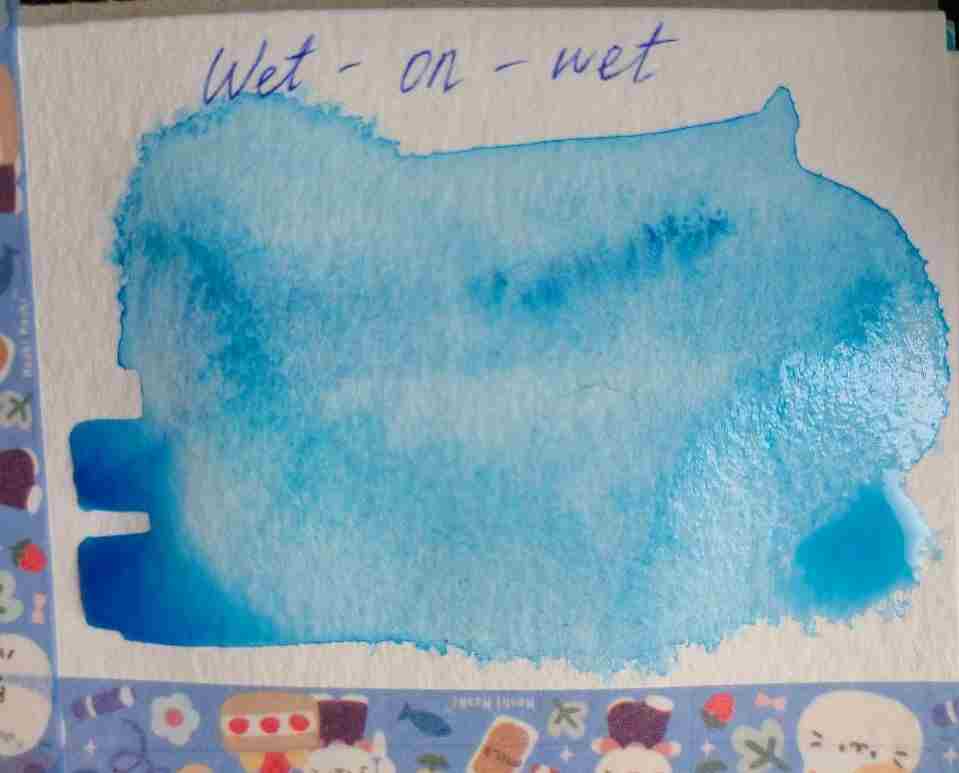
At the same time, thinned with water acrylic paint can imitate watercolor painting, while even thicker applications of watercolors will not allow it to achieve an acrylic effect.
Different application
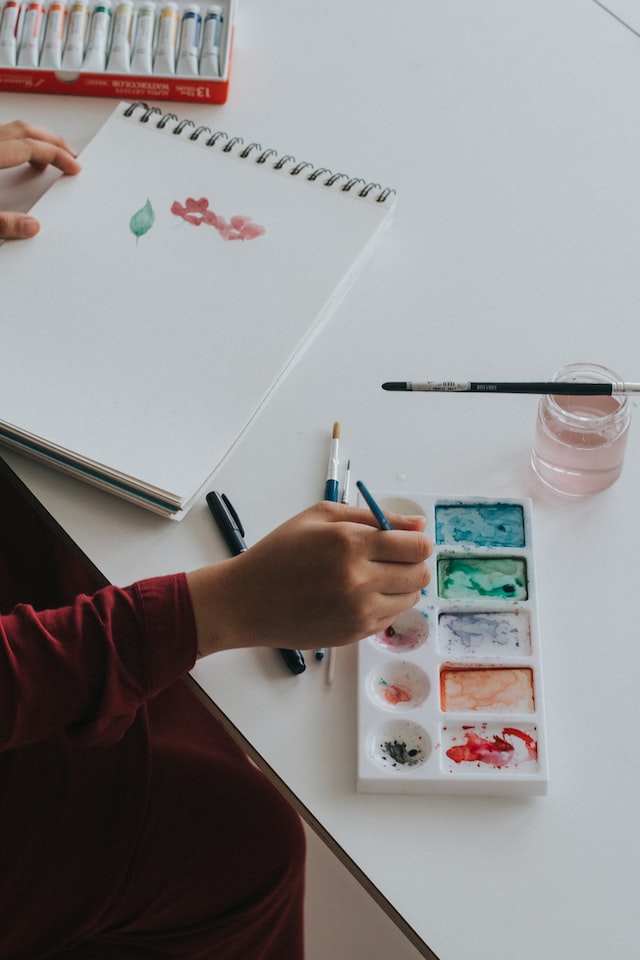
There is a big difference between acrylic and watercolor in how we work with colors and how we paint.
With acrylics, it is recommended to paint from dark to light, which means we paint darker areas first and then move gradually to lighter areas and finish with highlights and small details.
With watercolor, it’s important to paint from lighter to darker colors.
With watercolor, it will be impossible to paint over dark color due to the natural transparency of watercolors. For watercolor light colors, this “air” around the painting is crucial.
Related: Do You Paint Acrylic Light to Dark or Dark to Light?
Differences in priming the surface
Using acrylic paint on canvas or wood, you need to prime it with a primer – usually, a gesso, applied in 2-4 layers. With watercolor, you use watercolor paper which does not need any primer.
However, watercolor canvases need to be primed with a special watercolor primer.
Basically, you need a special canvas for watercolor, or you can also prime a canvas with a watercolor ground to make it more comfortable to work with watercolor.
Check the full guide about using gesso for acrylics.
Watercolor is less durable than acrylic
Acrylic paintings on canvas can and are supposed (if properly protected and maintained) to last for centuries. Watercolor artwork on paper is more subject to deterioration, as the paper is not as solid as a canvas.
If you will place your watercolor painting under the glass or use a UV protective artist quality varnish, it will allow you to protect the painting for years.
Both paint, acrylic and watercolor are sensitive to UV and fading, but with watercolor, it will be especially noticeable because the layers of paint are thin and it is transparent by nature.
An ideal environment for paintings: well-aired area, 65-75 F, 40-50% humidity, no direct sunlight
Watercolor Needs Different brushes
The difference between acrylics and watercolor lies also in the choice of brushes: we generally use synthetic brushes for acrylic paint and natural, softer brushes (Kolinsky Sable as the finest) for watercolor paint.
Watercolor brushes are supposed to work with more fluid paint and they are shorter than acrylic brushes.
You can also use synthetic brushes for watercolor, but you won’t appreciate the quality.
The most common brush shape for watercolor is a round brush.
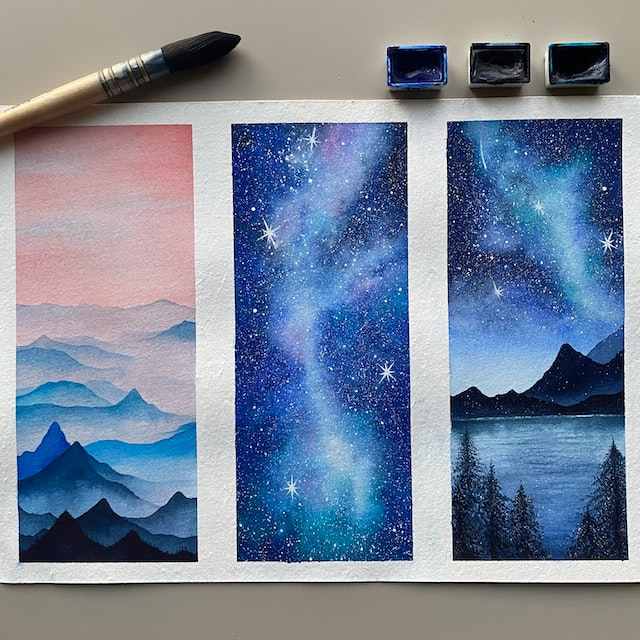
Related: The Best Brush for Acrylic Paint on Canvas
Beginners in acrylic painting usually start with flat and round brushes. The main brush types are the same for both paints.
When choosing a brush for acrylic paint, you keep in mind the quality of the bristles, handle, and brushstroke, with watercolor you have more factors to consider:
- how much water and pigment can this brush soak?
- how well the brush holds its point?
- how quickly do the bristles snap back into parallel with the handle after they are bent at an angle?
- how smooth the color flows from the tip of the brush and how the paint is released upon the paper. A high-quality brush will have an even, consistent flow rate which results in a steady release onto the paper.
- if a brush releases the entire pigment load at once. If it happens, it will create visible paint patches and it is not what you are looking for.
Watercolor is cheaper than acrylic
Watercolor is assumed to be the most affordable paint compared to oil or acrylic.
In general, it is slightly cheaper than acrylic paint but it depends a lot on the brand and paint grade.
Let’s compare prices for watercolor and acrylic paint on one of the online art supplies stores:
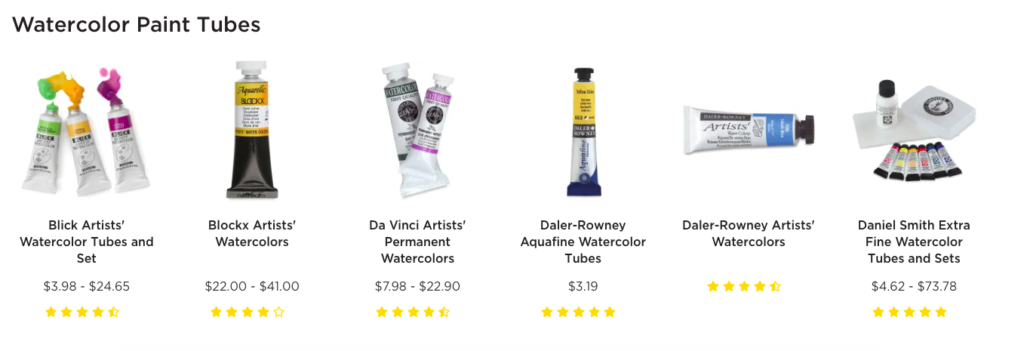
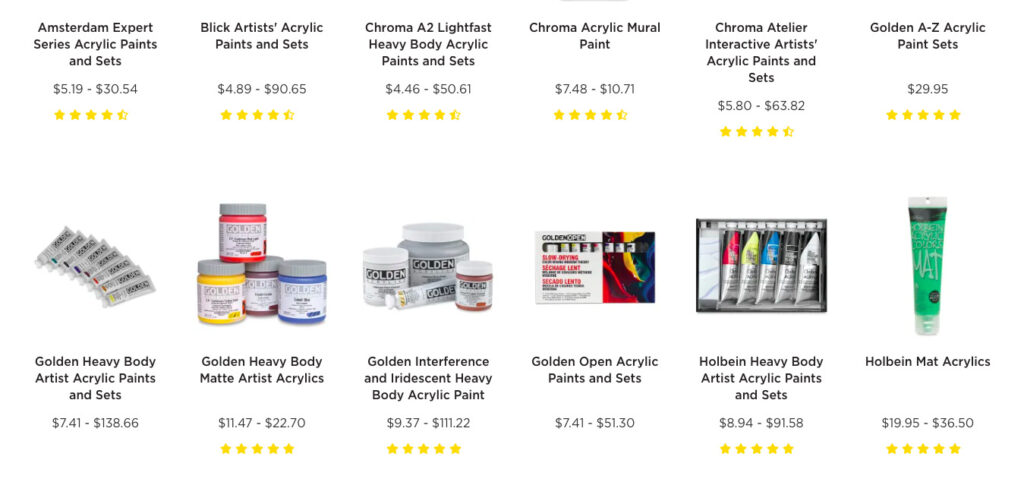
Let’s also compare a specific brand, e.i. Winsor & Newton, lemon yellow.
| Winsor & Newton Professional Acrylic Paints | 2 oz | $7.79 |
| Winsor & Newton Professional Acrylic Paints and Sets | 0.7 oz | $6.29 |
Or, Blick, as they are well-known for affordable prices and high quality:
| Blick Artists’ Watercolors | 0.47 oz | $5.43 |
| Blick Artists’ Acrylic Paints and Sets | 2 oz | $6.59 |
As we can see, watercolor seems to be slightly cheaper. But watercolor paints have small-sized tubes and last longer than a tube of acrylics.
Watercolor has a longer history than acrylic
While watercolor was already known in the ancient world, acrylic resin was invented at the beginning of the 20th century by Otto Röhm, and then it was patented by the USA.
Synthetic acrylics were developed as a medium combining oil and watercolor properties.
First acrylics were mineral spirit-based and some of them were toxic.
But the initial use of acrylic paint was for houses and exteriors, and only after the water-based option was created, did artists begin to use it as a painting medium. Golden and Liquitex were the first manufacturers to start producing acrylic paint.
Watercolor paint was popular in ancient Egypt, East Asia, India, Ethiopia, and other countries, but it became common among European artists only during the Renaissance.
Back at that time, artists were using watercolor mostly for sketching and copies, and also they were used to grow plants and make their own natural pigments for paint.
In the 18th century, England introduced watercolor as a sign of a good level of education, expeditions where watercolor artists paint all journeys popularized watercolor and brought them to the next level.
The three English artists who contributed to setting watercolor as an independent painting medium are Paul Sandby (1730–1809), often called the “father of the English watercolor”; Thomas Girtin (1775–1802), and Joseph Mallord William Turner (1775–1851).
United States started to love watercolor in the 19th century with early practitioners John James Audubon, William H. Bartlett, and George Harvey.
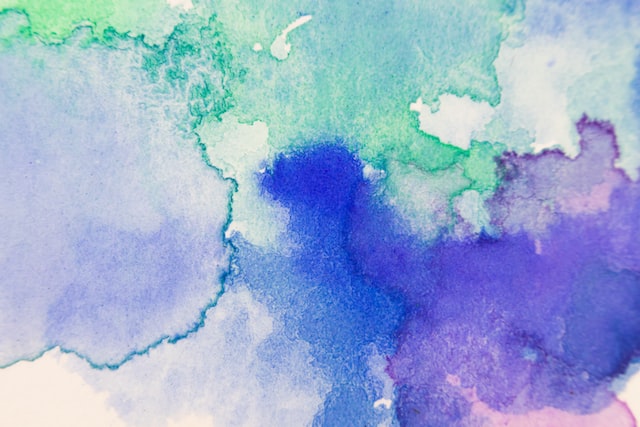
Price for selling and competition
When you have at least 15 artworks, you can easily apply for online galleries and sell your painting.
The 2 main platforms are SaatchiArt and Artfinder, let’s check the competition and prices.
You may guess that the competition for acrylic painting is huge and it is true: there are more than 1 million acrylic artworks (1 116 435) in Saatchi art while only 214 700 watercolors.
On the real-time screenshot (made at the end of Feb 2021) you can see the highest price for watercolor paintings – is about $66.000 and for acrylics – $101.000.
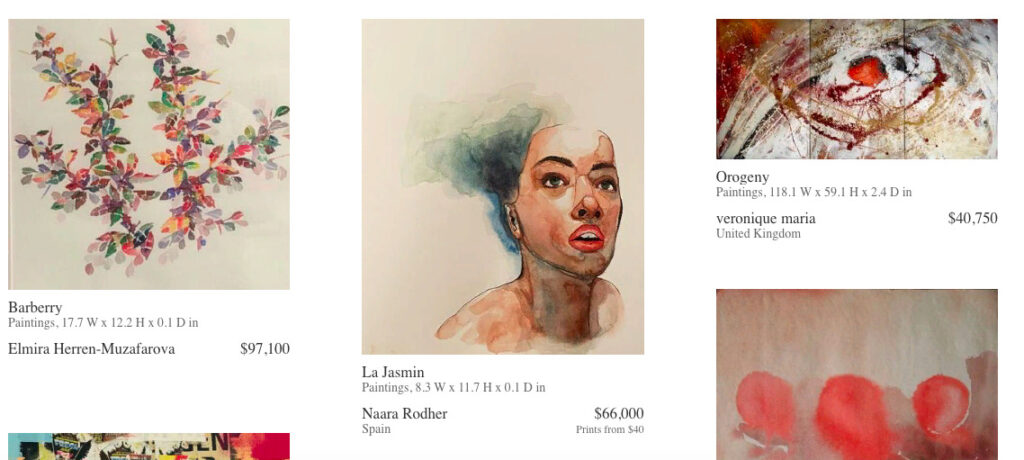
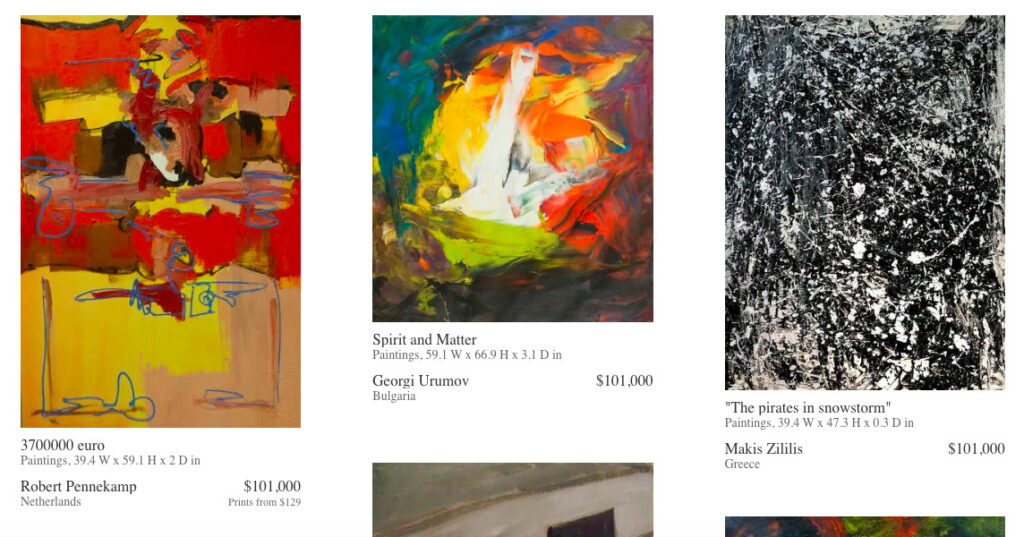
On Artfinder the situation is the same – a lot of acrylic painting and less watercolor, but watercolor is much cheaper than acrylics.

You can find all opportunities to sell your art here: Where Can I Sell My Acrylic Paintings? 77 Best Art Selling Sites
Bottom line – Is Watercolor Better Than Acrylic?
- Start with acrylics if you want to create more detailed paintings and love thicker, denser color applications and texture.
- Start with watercolor if you like transparent, loose painting styles and want to focus more on sketches and illustrations.
*that doesn’t say you can only do sketches with watercolor, you can do marvelous large paintings once you truly master color/water balance.
Ultimately, I see watercolor and acrylics as two different mediums giving beautiful but very different results. And I love both! Depending on the mood…
If you love flowers, making light, full-of-air illustrations or landscapes, if you like pastel colors – your choice would be watercolor.
If you like thick, opaque, bright paint applications, abstract art, textured art, and realistic classic portraits – you would go with acrylics.
Of course, both of them can be used in such a variety of techniques that you sometimes will never guess it was watercolor or acrylics, I’m just sharing my personal perspective and impression when I was a beginner. It will ultimately come down to your personal painting style.
As a beginner, I was also terrified by water blotches when I tried watercolor without an adequate understanding of how to use it. I didn’t go back to it for 3 years after the initial failure.
No matter what you choose, give it all your heart and enjoy painting! Do you have any questions? Let me know in the comments!
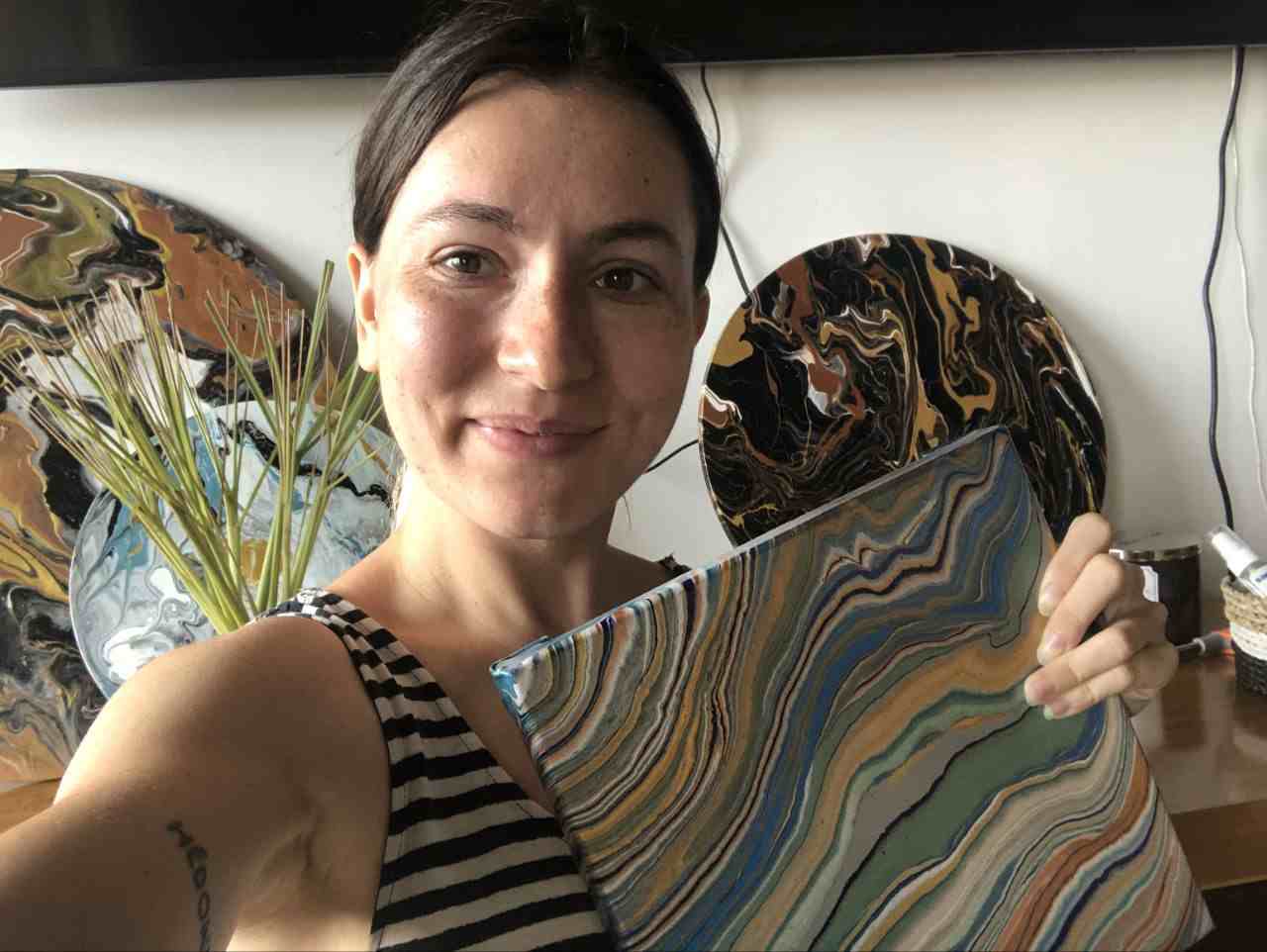
Masha Eretnova, born in 1991, is a Buenos Aires-based certified teacher, artist, and member of the Professional Artist Association with 20+ years of personal painting journey.
She started painting and drawing very early and is now an international abstract artist and educator passionate about acrylic painting, gouache, and crafts.
Her works are part of international exhibitions and contests, including ArtlyMix (Brazil), Al-Tiba 9 (Spain), Exhibizone (Canada), Italy, and many more.
Besides her artistic pursuits, Masha holds a post-grad diploma in Teaching Film Photography and 2 music school diplomas: piano and opera singing.
